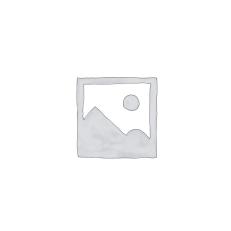Description
TABLE OF CONTENTS
Title Page
Approval Page
Dedication
Acknowledgement
Abstract
Table of Content
CHAPTER ONE
1.0 Introduction
1.1 Background of the project
1.2 Problem statement
1.3 Objective of the project
1.4 Scope of the project
1.5 Purpose of the project
1.6 Significance of the project
1.7 Problem of the project
1.8 Limitation of the project
1.9 Project organisation
CHAPTER TWO
2.0 Literature review
CHAPTER THREE
3.1 Material and method
CHAPTER FOUR
RESULT ANALYSIS
4.0 Construction Procedure and Testing
4.1 Casing and Packaging
4.2 Assembling of Sections
4.3 Testing of System Operation
4.4 Cost Analysis
CHAPTER FIVE
5.0 Conclusion
5.1 Recommendation
5.2 References
CHAPTER ONE
1.0 INTRODUCTION
1.1 BACKGROUND OF THE STUDY
The chicken (Gallus domesticus) is a domesticated bird, with attributes of wild species such as the red and grey junglefowl that are originally from Southeastern Asia. Rooster or cock is a term for an adult male bird, and a younger male may be called a cockerel. A male that has been castrated is a capon. An adult female bird is called a hen and a sexually immature female is called a pullet (Carter, 2013).
Originally raised for cockfighting or for special ceremonies, chickens were not kept for food until the Hellenistic period (4th–2nd centuries BC). Humans now keep chickens primarily as a source of food (consuming both their meat and eggs) and as pets (Carter, 2013).
Chickens are one of the most common and widespread domestic animals, with a total population of 23.7 billion as of 2018,[4] up from more than 19 billion in 2011 (Ying et al., 2016). There are more chickens in the world than any other bird. There are numerous cultural references to chickens – in myth, folklore and religion, and in language and literature (Ying et al., 2016).
A hen is a female chicken. People often keep hens in order to eat them or sell their eggs. For the purpose of laying egg, the spacing and the environment of the hen is paramount important. Each hen is given about 67-76 square inches of space. Cages are usually arranged in tiers; a large number of cages in one house necessary to accommodate a flock came to be called a battery of cages, and hence laying cages are often called battery cages.
Battery cages are a housing system used for various animal production methods, but primarily for egg-laying hens. The name arises from the arrangement of rows and columns of identical cages connected together, in a unit, as in an artillery battery. Although the term is usually applied to poultry farming, similar cage systems are used for other animals. Battery cages have generated controversy between advocates for animal welfare and industrial producers.
Battery cage reduces labour by the poultry farmer. This is because the chickens are well-organized and conducted to be in rows with several facilities for their feeding, carriers of their faeces droppings adequately positioned and the eggs rolling to the appropriate places designed in the battery cages. This work is aimed at building a battery cage for poultry management.
1.2 PROBLEM STATEMENT
Battery cages are the predominant form of housing for laying hens worldwide. They reduce aggression and cannibalism among hens, but are barren, restrict movement, prevent many natural behaviours, and increase rates of osteoporosis (Perry-Gal et al, 2015).
1.3 PURPOSE OF THE STUDY
The purposes of this study are:
- To build a systems that will five farmers more control over diseases and feed.
- To provide protection to the birds against predators while allowing them to find some food for themselves in a fenced – in area or range.
- To reduce labour involved in managing poultry and avoids wastage of feeds.
1.4 SCOPE OF THE STUDY
The scope of this work covers building a battery cage that will include a water – tight roof, good ventilation with no cold drafts, internal surfaces that are easy to clean, adequate floor space for the number of birds contained, ratproof floors and walls.
1.5 LIMITATION OF THE STUDY
It has been shown that keeping laying hens in battery cages exposes them to severe frustration for the two hours before they lay an egg. Most hens, and particularly those of light hybrid strains, do not seem to regard the cage as a suitable nesting site.
1.6 ADVANTAGES AND DIS ADVANTAGES
The main advantages of battery cages for laying hens over alternative husbandry systems are (Perry-Gal et al, 2015):
- Increased hygiene resulting in a much lower incidence of diseases in which the infectious agent is spread through the droppings.
- Battery cages can be placed under existing roofs; thus, a special building may not be required
- With battery cages more birds can be kept in a building than on deep litter.
- Less labor per bird is needed than with other systems
- Poor layers can be identified immediately and culled, thus saving feed.
- Problems with parasites, particularly ticks, are reduced, but nutrition may be a problem.
- When properly constructed, battery cages can last many years.
- Fewer disease problems are caused by transmission through fecal matter.
- Battery cages are a cheaper investment in the long run due to ease in care and feeding of the birds.
The disadvantages are:
- Cages are hard to construct properly.
- They involve very high initial investment per bird.
- There must be constant and excellent ventilation.
- There are more broken eggs than with deep litter.
- The feed must contain all necessary vitamins and minerals needed by birds.


Reviews
There are no reviews yet.